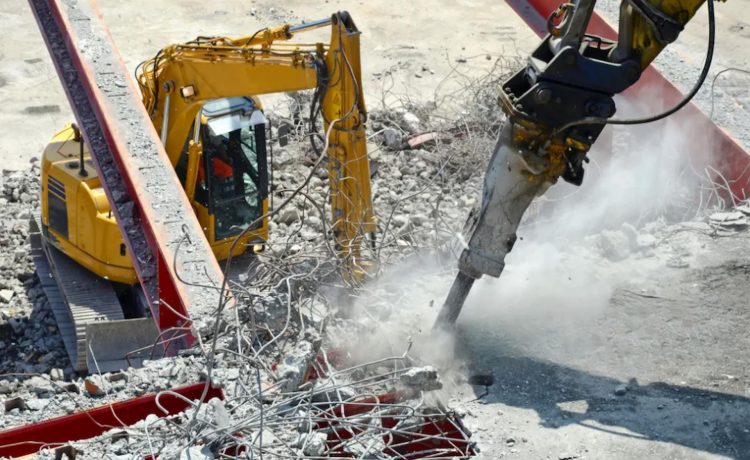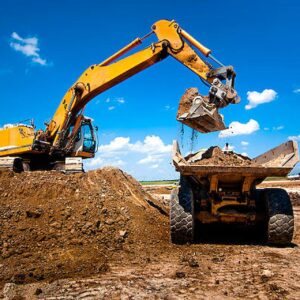Hydraulic breakers have become an essential tool for construction and demolition projects worldwide. Their immense power, precision, and efficiency make them the go-to equipment for breaking down tough materials such as concrete, rocks, and asphalt. Whether you’re tearing down an old building, prepping land for a new foundation, or clearing a construction site, hydraulic breakers can help you get the job done quickly and effectively. But how do these machines work? What makes them so powerful? And how do you choose the right one for your project?
In this article, we’ll explore hydraulic breakers’ power and performance, explain their key components, and help you understand why they’re a top choice for tough demolition tasks.
The Role of Hydraulic Breakers in Modern Construction
Speed, precision, and efficiency are critical in today’s construction and demolition industries. As urban landscapes evolve and buildings are constantly being replaced or renovated, the demand for effective demolition equipment has grown. This is where hydraulic breakers come into play. These machines, powered by hydraulic systems, are engineered to deliver powerful blows that breakthrough hard materials, saving time and effort.
For construction workers, site managers, and project planners, understanding how hydraulic breakers function and knowing which model to choose for specific tasks is essential for project success. Let’s dive into the world of hydraulic breakers and explore their many benefits.
What is a Hydraulic Breaker?
A hydraulic breaker, also known as a hydraulic hammer, is a powerful machine attachment designed to break hard materials such as rocks, concrete, and asphalt. The hydraulic systems of heavy machinery such as excavators, backhoes, or skid steers power these devices. Using hydraulic pressure, the breaker delivers forceful blows to the target material, splitting it into smaller, manageable pieces.
The main components of a hydraulic breaker include
- Piston: The part that transfers hydraulic energy into mechanical force.
- Chisel or Tool: The tip that makes contact with the material, typically made from hardened steel.
- Accumulator: A device that stores hydraulic energy for more powerful blows.
How Do Hydraulic Breakers Work?
The operation of a hydraulic breaker involves converting the hydraulic power from the host machine into a mechanical force, which is then used to break materials. Here’s how it works:
- Hydraulic fluid is pressurised in the machine’s hydraulic system.
- This pressurised fluid moves the piston inside the breaker.
- The piston strikes the tool (chisel), delivering an impactful blow to the material.
- The repeated strikes weaken the material, causing it to fracture or crumble.
These breakers come in various sizes, making them versatile for projects of all scales.
Why Hydraulic Breakers Are Essential for Tough Demolition Tasks
Hydraulic breakers have become a vital tool for tough demolition tasks. They offer a range of benefits that make them indispensable for large-scale demolition jobs:
Power and Precision
Hydraulic breakers are known for their incredible power. The force they generate can break through hard materials that would otherwise be too difficult or time-consuming to handle with traditional tools. With this equipment, construction crews can demolish structures faster, making the overall project more efficient.
Additionally, hydraulic breakers allow for precision in demolition work. Unlike blasting or wrecking balls, which can cause uncontrolled destruction, hydraulic breakers enable operators to target specific areas of a structure. This makes them ideal for projects that require careful material removal or partial demolition.
Versatility Across Different Materials
One of the most significant advantages of hydraulic breakers is their ability to handle various materials. Hydraulic breakers can tackle multiple types of surfaces, whether you’re breaking up a concrete foundation, cutting through asphalt roads, or splitting large boulders.
Common materials that hydraulic breakers can handle include
- Reinforced concrete
- Rock and boulders
- Asphalt
- Brick and masonry
Reduced Labor and Increased Efficiency
Using manual tools or traditional demolition equipment requires significantly more labour. In contrast, a hydraulic breaker can perform the same task with fewer workers and in less time. This leads to greater efficiency on the job site, reducing labour costs and helping projects stay on schedule.
Environmental Considerations
Modern hydraulic breakers are designed to reduce noise and vibration, making them more environmentally friendly than some older demolition methods. The precision and control offered by these machines also minimise the risk of dust and debris spreading uncontrollably, which helps keep the worksite cleaner and safer for both workers and nearby residents.
Types of Hydraulic Breakers
Hydraulic breakers come in various types and sizes, each suited to different kinds of demolition tasks. Understanding the different types can help you select the best one for your specific project needs.
Small Hydraulic Breakers
These compact breakers are ideal for smaller demolition jobs or use in areas with limited space. They are often used to break concrete on sidewalks or demolish small structures.
Medium Hydraulic Breakers
Medium-sized breakers can handle various demolition tasks, from roadwork to breaking down medium-sized structures. These breakers are commonly seen in construction sites where moderate power is required.
Large Hydraulic Breakers
Large hydraulic breakers are needed for the most demanding demolition tasks. These breakers deliver the highest impact force and are designed for breaking down large structures such as buildings, heavy-duty concrete, and massive boulders.
How to Choose the Right Hydraulic Breaker for Your Project
Choosing the right hydraulic breaker is critical to ensuring the success of your demolition project. Here are some key factors to consider:
Size of the Job
The size of the breaker should match the size of the job. Small and medium-sized projects may only require small or medium breakers, while large-scale demolition requires a larger, more powerful machine.
Material Hardness
Different materials require different levels of force to break. For example, reinforced concrete or rock will need more powerful breakers than asphalt or masonry.
Host Machine Compatibility
Hydraulic breakers are mounted on host machines such as excavators or skid steers. Ensure the breaker you choose is compatible with the machinery available on your site.
Frequency of Use
If the breaker will be used frequently, invest in a high-quality, durable model. Cheaper models may not last as long under heavy use, leading to more repair downtime.
Budget
While more expensive hydraulic breakers often come with advanced features and better durability, staying within your project’s budget is important. Evaluate the cost against the features to determine the best value for your money.
Safety Tips for Using Hydraulic Breakers
As with any heavy machinery, safety is paramount when using hydraulic breakers. Here are some essential safety tips:
- Wear Personal Protective Equipment (PPE), such as hard hats, safety goggles, gloves, and steel-toe boots.
- Inspect the Equipment: Before each use, ensure the hydraulic breaker and host machine are in good working condition.
- Follow Manufacturer Guidelines: Always follow the manufacturer’s operation, maintenance, and safety instructions.
- Control Dust and Debris: Use water sprays or dust suppression equipment to minimise dust during demolition.
In Summary
Hydraulic breakers have revolutionised the way tough demolition tasks are performed. Their immense power, precision, and versatility make them a top choice for breaking through concrete, rock, asphalt, and other challenging materials. Whether managing a small demolition project or tearing down large structures, hydraulic breakers provide the performance you need to do the job efficiently.
By understanding the different types of hydraulic breakers and choosing the right one for your specific project, you can ensure that your demolition tasks are completed with speed, accuracy, and safety. So, when the job gets tough, trust the power of hydraulic breakers to make the process easier and more efficient.




